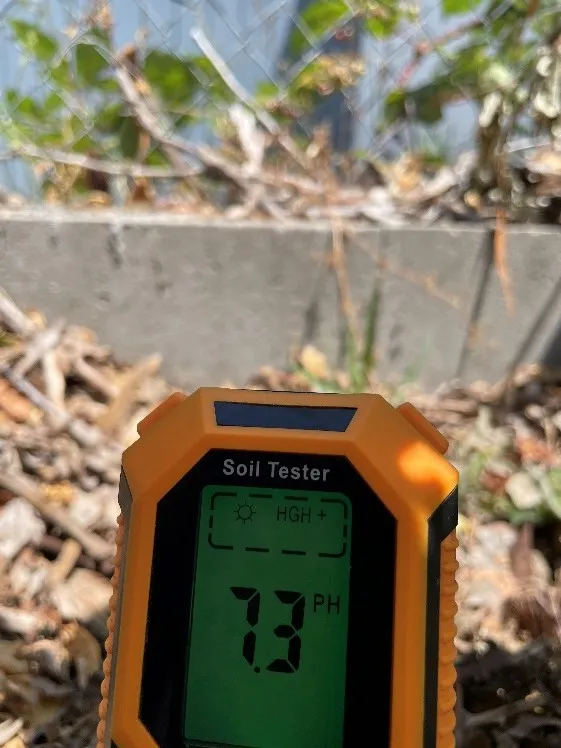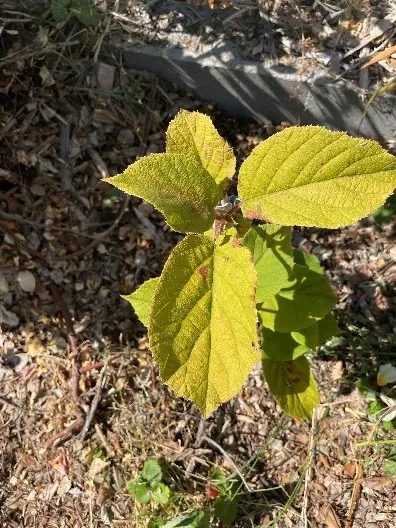Blog by Brenda Altman
I have been gardening for several years and marvel at how plants grow. I built raised beds, mixed in planting soil and composted manure, and planted vegetables. With adequate watering and little maintenance, the veggies thrived. Ah success! Well, it was short-lived success. It seems so easy, but little did I know that gardening has its own set of challenges. My first garden was in San Francisco, where the fog ruled, and the soil was sandy. I managed to grow potatoes, garlic, and carrots outside in the amended composted native soil. I also built a greenhouse in which I grew tomatoes.
I moved to Vallejo and purchased a house that had all three fruit trees surrounded by concrete. Everywhere was concrete. Concrete, besides being a heat sink, stops plants from growing. So, it was out, out, out damn concrete. I never gave any thought to checking soil acidity.
I expanded the garden and put in several plants directly into the native soil mixed with planting soil and manure. Much to my chagrin, the plants did not thrive despite watering and weed control. In spring, the leaves of the kiwi were unhealthy, pale yellow. The persimmon tree leaves were all yellow, and the nearby lime tree had many yellow leaves. The yellow leaves of the persimmon had green veins. Aha, iron deficiency, I thought (note: not all yellowing of leaves is caused by iron deficiencies). The pH of the persimmon read 7.0 and the pH on the kiwi read 7.3. The problem was twofold: an iron deficiency and an alkaline pH.


What causes acid or alkaline soil? The reasons are varied. The soil in my yard was covered by concrete and is clay with little topsoil. Concrete is made of limestone, which is alkaline, and it could have leached into the soil when it was poured or even as it just degrades from weathering. The water from Vallejo Utility is also alkaline so repeated watering just exacerbates the problem. So, check the soil pH when you discover the yellowing of the plant leaves. The only recourse if you need to plant in certain areas is to acidify the soil with chemicals or you could scatter pine needles and fir bark into the soil and wait for it to break down. I choose to do both. First, since the plants are already in the ground, I will add iron sulfate to the soil and monitor the results both visibly and by measurement. I will look for acid compost containing fir bark and needles and dress the topsoil on the plants. I will compost the soil this winter with the mixture and check the acidity before planting.
For future planning, I will check the pH requirements for the desired plants and add soil amendments prior to planting. For long-term planning, I will acidify the soil using fir, fir bark compost.
Required pH metering is necessary.

Plan if you see yellowing suspect iron deficiency and alkaline soil. Invest in a good pH meter. Take your leaves to a master gardener table or your local nursery. Alkaline soil will persist, so it is not a one-and-done solution.
Image by <a href="https://pixabay.com/users/bulgarianf-9305914/?utm_source=link-attribution&utm_medium=referral&utm_campaign=image&utm_content=6579961">Bekyarov</a> from <a href="https://pixabay.com//?utm_source=link-attribution&utm_medium=referral&utm_campaign=image&utm_content=6579961">Pixabay</a>

